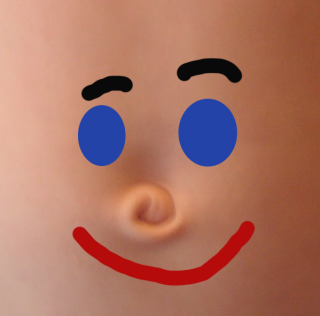Sex
Improving Your Sex Appeal
14 science facts to help you up your sexy game—or not.
Posted April 21, 2014

Aki Sinkkonen of the University of Helsinki suggests that, over the ages, a woman's belly button has been a sign of her vigor, sexually and reproductively. Reviewing assessments of male preference conducted by other researchers he noted that women's innies are very popular. And, he says, that ideally those innies are delicate—not too much hooding, and not too cavernous.
When bad odors happen to good people, it’s decidedly unsexy. Some people stink no matter how often they bathe. In a study at a smell lab in Philadelphia, scientists ran a smiple chemical test on 353 people who had "malodor production" that couldn't be explained by poor hygiene, flatulence, or dental problems. They found that about one third of them tested positive for trimethylaminuria (TMAU), a genetically-transmitted disease that thwarts the body's ability to metabolize trimethylamine (TMA), a chemical compound common in eggs, some legumes, wheat germ, saltwater fish, and organ meats. When TMA is inadequately metabolized, it accumulates in urine, sweat, and saliva. The result is a gently radiating, fishy stench that is far from popular in wine bars. TMAU is easily diagnosed with a chemical test that can be run in a medical lab. And that’s good, because a diet hygienically "clean" of the foods carrying high TMA concentrations clears the air.
And if cleaning up your diet doesn't give you back your sex appeal, maybe plastic nanocapsules of lemon scent in your clothing will. Researchers in Portugal have woven them into fabrics like wool and polyester. The scent neutralizes body odor even after the clothes have been dry-cleaned or washed.
Gentlemen think blondes are young. At Poland’s University of Wroclaw 360 men were shown pictures of a woman whose photo had been manipulated to display her with blonde, brown, and dark brown hair at 20, 30, and 40 years old. When blonde she was generally judged to be younger.
Gentlemen prefer blonde hitchhikers. Researchers at France’s University of South Brittany had five young women rotate between blonde, brown, or black wigs while hitchhiking. Blonde wigs elicited offers of rides 18 percent of the time. Brown and black wigs “stopped traffic” only 14 percent and 13 percent of the time, respectively.
By Internet survey, a professor of consumer behavior and marketing at Cornell University’s School of Hotel Administration learned that waitresses who are blonde get better tips—especially if they are also busty, skinny, and young.
Men: Prepare to toss your toupees. In studies conducted at the Wharton School, subjects looking at photos judged men with shaved heads to be taller, stronger, and more dominant than those wimps with hair.
Men [#2]: And if it's a one-night-stand you're looking for, rouge up your facial scars. Scientists at the University of Liverpool found that women looking for short-term relationships prefer facial scars, perhaps seeing them as signs of bravery. They don't want to marry those men, but they do want to have a good time with them.
Whatever happened to Our Bodies, Our Selves? Surveying 2,451 women, researchers at Indiana University learned that pubic waxing is associated with more positive genital self-image and sexual function. Really?

Whatever happened to Our Bodies, Our Selves? Surveying 2,451 women, researchers at Indiana University learned that pubic waxing is associated with more positive genital self-image and sexual function. Really?
And really again? Psychologists at Lafayette College in Pennsylvania found that college students make no negative assumptions about a woman when told that unshaved body hair is a result of a medical condition. But when they’re told that she’s hairy because she’s a feminist, many rate her as unfriendly, immoral, aggressive, unsociable, and dominant.
Publishing about the years 1842-1971 in the Journal of Nonverbal Behavior, evolutionary biologist Nigel Barber noted that, whenever the marriage market in Britain got tight for men, facial hair came into fashion.
Archeologists in London have found a jar of cosmetic cream from about 2,000 years ago, when Rome occupied Great Britain. It was made of animal fat, starch, and tin—which represents an improvement over other cosmetics of the time, which were lead-based. A modern batch made of the same ingredients left faces looking spectacularly white.
Even Neanderthals may have worn makeup. Hand-colored cockelshells filled with red and yellow pigment have been found in caves in their caves in Spain.
With the idea that higher status makes them more sexually attractive to richer men, many women spend time and money on clothes and cosmetics. But they would definitely not go to those all that trouble if they were wasps. Researchers in Arizona painted onto “blue-collar” female wasps the dots typical of high status female wasps. The blue collars got beaten up by all the other female wasps.
____


Send a message to Rebecca Coffey
www.rebeccacoffey.com
Twitter: @rebeccacoffey




